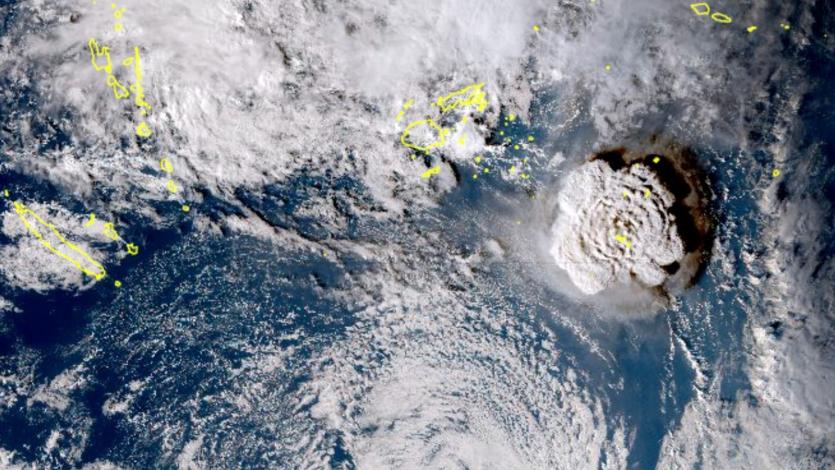An undersea volcano erupted in the Kingdom of Tonga on January 15, 2022, as seen at right in this image taken by a Japanese weather satellite. Photo by Japan Meteorology Agency/AP
By Patryk Krych | The World Daily | JANUARY 19th 2022
With the recent eruption of the underwater volcano Hunga Tonga-Hunga Ha’apai, in the Pacific island nation of Tonga, scientists have warned that the environmental backlash of the natural disaster may be devastating for years to come, especially for the region’s marine environments.
Potentially lasting damage to coral reefs and eroding coastlines were among the listed effects that scientists had observed as a result of the satellite images that followed the disastrous eruption in the Tonga nation, which caused catastrophic damage as well as a tsunami that had destroyed homes and communities in the “unprecedented disaster.”
Aid efforts have been quick, but somewhat delayed at the island nation’s insistence that all aid deliveries be as contactless as possible in the hopes of limiting the spread of the Covid-19 pandemic virus. Thus far, the region has managed to avoid the pandemic crisis.
“They really don't want to exchange one disaster for another,” said the head of delegation in the Pacific for the Red Cross, Katie Greenwood.
Om Tuesday, the government of Tonga stated that three people had been killed as a result of the disaster, and several others had been injured. The tsunami wasn’t the only disastrous consequence of the eruption, as the resulting gasses had also led to acid rain falling in the region, causing severe crop damages and threatening food shortages.
“There is likely to be acid rain around Tonga for a while to come,” said a volcanologist at the University of Auckland, Shane Cronin. “Depending on how long the eruptions last, food security could be compromised.”
According to The United Nations humanitarian affairs, the air quality in the nearby nation of Fiji was being carefully monitored, as the satellite imagery suggested that the plume of ashy smoke from the eruption may be pushed Westwards, potentially spreading the effects of the acid rain, and thus posing further dangers.






